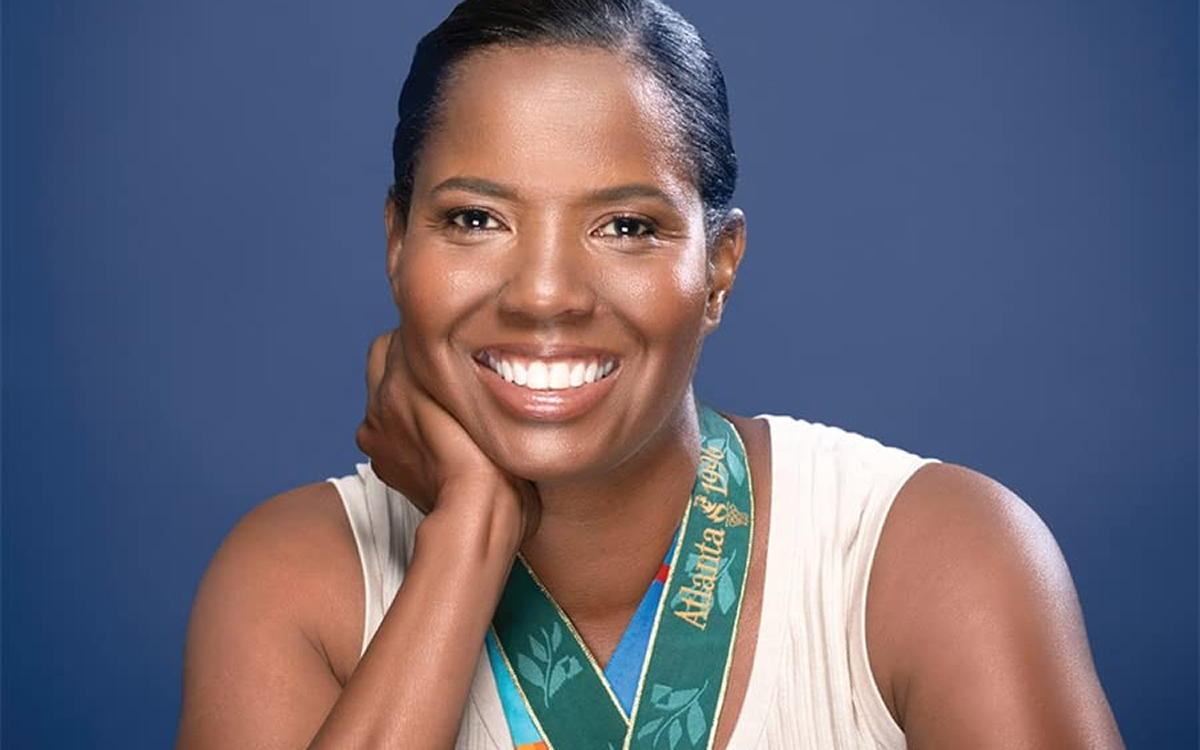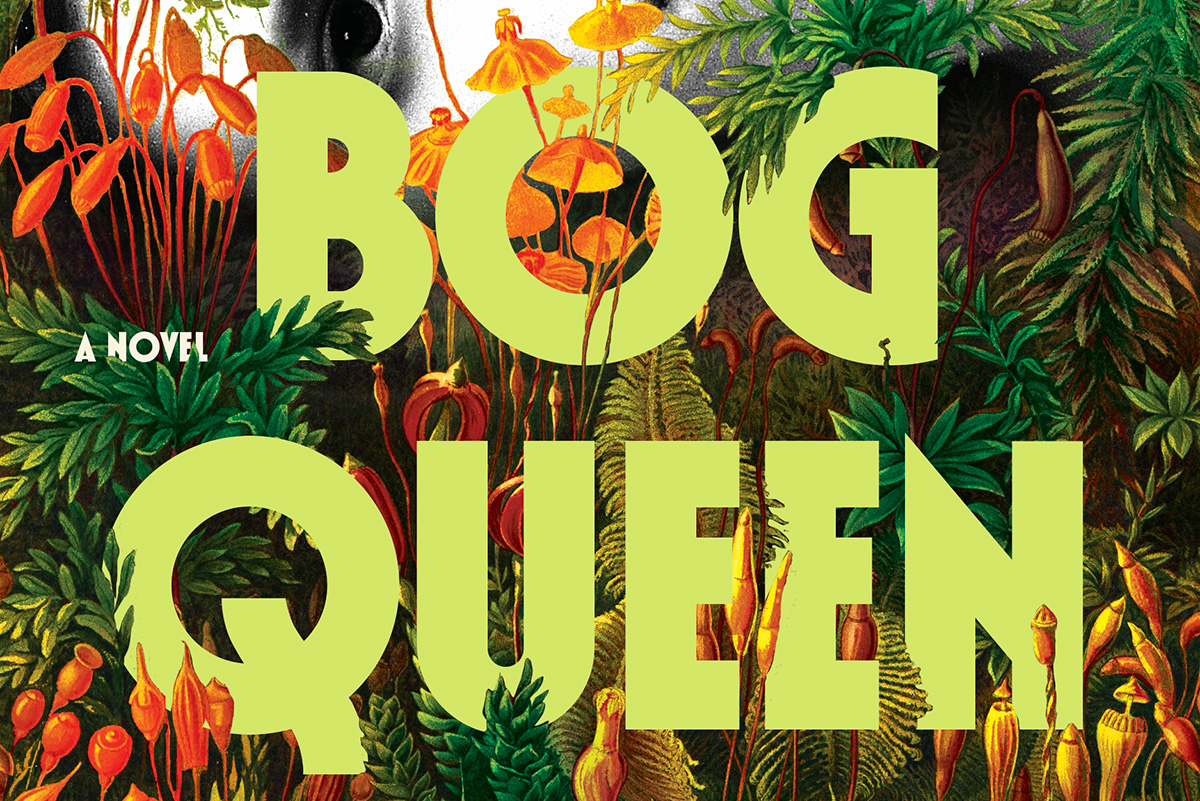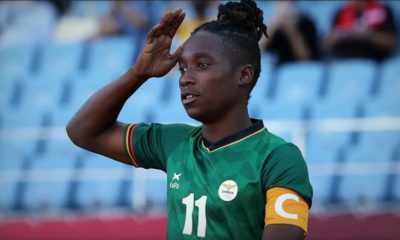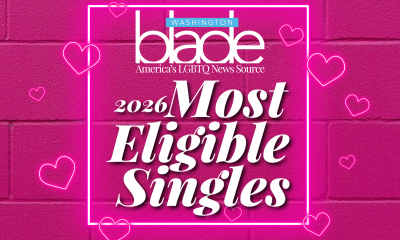Books
Trailblazing soccer legend Briana Scurry inspires with new book
‘My Greatest Save’ recounts highs and lows of her remarkable life

Black lesbian soccer icon Briana Scurry knew from the get-go that she would compete in the Olympics.
In February 1980, Scurry, then eight, was in the family room in her home in Dayton, Minn., watching the Winter Olympics, held that year in Lake Placid, N.Y. The United States was playing hockey against Russia. In what became known as “the Miracle on Ice,” the U.S. Olympic team won the gold medal.
Scurry cheered for the U.S. team. But Jim Craig, the team’s goaltender, especially, became a hero for her. “One day I am going to be an Olympian, too,” Scurry decided.
This sounds like a child’s daydream – with as much chance of becoming a reality as a happily-ever-after-Disney movie.
But trailblazing soccer legend Briana Scurry has proved that, with talent, hard work, support from family and friends, along with a sense of humor, dreams can come true.
The child who dreamed of being an Olympian grew up to find herself on the Wheaties box for her winning save as goalkeeper for the U.S. Women’s National Soccer Team in the 1999 FIFA World Cup championship game. (FIFA is world soccer’s governing body.)
“I believe I’m the only Black lesbian to be on a Wheaties box,” Scurry, who won the gold medal in the 1996 and 2004 Summer Olympics, said in a recent interview with the Blade.
Scurry’s life has had Olympian highs and hellish lows.
In 2010, her soccer career ended after she sustained a traumatic brain injury during a game. Scurry ran up against an insurance company that wouldn’t pay for the medical care she needed.
At one of her lowest points, she had to pawn her Olympic gold medals to pay for food.
In “My Greatest Save: The Brave, Barrier-Breaking Journey of a World-Champion Goalkeeper,” her revealing, moving, can’t-put-down book, (written with Wayne Coffey), coming out on June 21, Scurry tells her compelling story.
It is “more than the story of an all-time great goalkeeper,” tennis legend and LGBTQ icon Billie Jean King said of “My Greatest Save.” “It’s about a pioneering female athlete who made sure to honor those who came before her even as she worked hard to make things better for those who came after her.”
“It was time,” Scurry said when asked why she wrote the book, “I was in a good place to do it.”
When you’re in a tough situation it’s hard to see how to write about it, she added, “I had to go away from it to go back to it. We started in 2020 right before the pandemic.”
Scurry hopes the book will inspire readers. “I hope it will encourage people to blaze trails in their own lives,” she said.
Scurry wanted readers to see behind the veil of a professional athlete – to see how she overcame obstacles, kept going, and reached her goals.
Throughout her life and career, Scurry has encountered obstacles and barriers from a traumatic brain injury to racism and homophobia.
From early on, Scurry was aware that she was different. There were few people of color when she was in elementary, middle, or high school. The youth soccer teams that she played on were also predominantly white. During her 17 years with the U.S. Women’s Soccer National Team, “it was the same thing — at least among the core players,” she writes in “My Greatest Save.”
In 2017, Scurry became the first Black woman to be elected to the National Soccer Hall of Fame, and she is one of the first out LGBTQ soccer players.
Scurry was so supportive of other queer soccer players that she became known as the “welcome wagon.”
“When I played with the Atlanta Beat we’d compete fearlessly against the opposing team,” Scurry said. “But after the game, [the Atlanta and the opposing team] wanted to hang out.”
Scurry would take the LGBTQ home and opposing players to a fun, safe place — a bar where they could grab something to eat and dance. “Then we’d go back to competing ferociously in the next game,” she said.
Scurry thinks she has been discriminated against because of how she looks. “Because I’m Black and lesbian,” she said.
In 1999, after the World Cup win, Scurry kissed her then girlfriend. “When we kissed the TV cameras cut away because we were lesbians.”
She also believes that she’s received fewer offers for commercial endorsements than white, heterosexual athletes.
Scurry worries about the “Don’t Say Gay” and anti-trans laws that are being passed nationwide. “I worry that these [queer] kids will be bullied. That they might become suicidal,” she said.
“I wrote my book for LGBTQ kids,” Scurry said, “I want them to believe in themselves and to believe that they can be athletes.”
“We’re going backwards,” Scurry added. “It’s frustrating. It’s tiring but we’re going to have to keep fighting for our rights.”
Scurry was forced to engage in one of the toughest fights of her life after she had a traumatic brain injury while playing soccer in 2010. After she was injured, Scurry was labeled “temporarily totally disabled.” That label was a severe understatement.
Scurry’s head injury left her in unbearable pain. It was incredibly hard for her to concentrate on the simplest things — from reading more than a couple of paragraphs to following the plot of a TV show.
Scurry became so depressed that she came close to ending her life. (If you are having suicidal thoughts, contact the Trevor Project and/or the National Suicide Prevention Lifeline).
“The insurance company said I was faking it,” Scurry said. “I told them I was a professional athlete. There was nothing I wanted more in the world than to get back in the game.”
“Why in the world would I have wanted to fake not being able to work?” she said.
Thankfully, in this low period in her life, Scurry was connected, through friends to Chryssa Zizos, who works in public relations.
Zizos publicized Scurry’s struggle with the insurance company. The publicity was effective. The company agreed to pay for the physical therapy and surgery that Scurry needed.
Today, Scurry and Zizos are happily married. Scurry loves being step-mom to Zizos’s children, who call her “bonus mom.”
Scurry, now fully recovered, talks about her traumatic brain injury to educate soccer players, coaches, and parents about concussions.
“There’s more research now about ways to help protect players from concussions,” she said.
Headbands would help protect players against concussions, Scurry said. “Some of the players won’t wear headbands,” she added, “because it would be perceived as weakness.”
Shin guards used to be voluntary, and players didn’t wear them, Scurry said.
“But after FIFA mandated them, players wore them,” she said. “The same thing would happen if FIFA mandated headbands.”
Scurry was thrilled last month when news broke from The New York Times and other outlets that landmark contracts had been signed with the U.S. Soccer Federation. The contracts say that, for the first time, men and women soccer teams will be paid equally in international matches and competitions. The agreement says that in forthcoming World Cup tournaments men and women will be paid equally in money awarded by FIFA in prizes.
“I’m overjoyed about women getting equal pay,” Scurry said.
Fifty years ago this month, Title IX of the Education Amendments of 1972 became law. The legislation, which prohibits discrimination against women in education, has enabled thousands of women and girls to participate in sports in high schools, colleges and professionally.
“Title IX opened the door for millions of girls around the country to be able to participate in sports,” Scurry said.
“Without Title IX … there would have been no path for me to play soccer collegiately and professionally,” she added.
The Blade may receive commissions from qualifying purchases made via this post.
Books
Feminist fiction fans will love ‘Bog Queen’
A wonderful tale of druids, warriors, scheming kings, and a scientist

‘Bog Queen’
By Anna North
c.2025, Bloomsbury
$28.99/288 pages
Consider: lost and found.
The first one is miserable – whatever you need or want is gone, maybe for good. The second one can be joyful, a celebration of great relief and a reminder to look in the same spot next time you need that which you first lost. Loss hurts. But as in the new novel, “Bog Queen” by Anna North, discovery isn’t always without pain.

He’d always stuck to the story.
In 1961, or so he claimed, Isabel Navarro argued with her husband, as they had many times. At one point, she stalked out. Done. Gone, but there was always doubt – and now it seemed he’d been lying for decades: when peat cutters discovered the body of a young woman near his home in northwest England, Navarro finally admitted that he’d killed Isabel and dumped her corpse into a bog.
Officials prepared to charge him.
But again, that doubt. The body, as forensic anthropologist Agnes Lundstrom discovered rather quickly, was not that of Isabel. This bog woman had nearly healed wounds and her head showed old skull fractures. Her skin glowed yellow from decaying moss that her body had steeped in. No, the corpse in the bog was not from a half-century ago.
She was roughly 2,000 years old.
But who was the woman from the bog? Knowing more about her would’ve been a nice distraction for Agnes; she’d left America to move to England, left her father and a man she might have loved once, with the hope that her life could be different. She disliked solitude but she felt awkward around people, including the environmental activists, politicians, and others surrounding the discovery of the Iron Age corpse.
Was the woman beloved? Agnes could tell that she’d obviously been well cared-for, and relatively healthy despite the injuries she’d sustained. If there were any artifacts left in the bog, Agnes would have the answers she wanted. If only Isabel’s family, the activists, and authorities could come together and grant her more time.
Fortunately, that’s what you get inside “Bog Queen”: time, spanning from the Iron Age and the story of a young, inexperienced druid who’s hoping to forge ties with a southern kingdom; to 2018, the year in which the modern portion of this book is set.
Yes, you get both.
Yes, you’ll devour them.
Taking parts of a true story, author Anna North spins a wonderful tale of druids, vengeful warriors, scheming kings, and a scientist who’s as much of a genius as she is a nerd. The tale of the two women swings back and forth between chapters and eras, mixed with female strength and twenty-first century concerns. Even better, these perfectly mixed parts are occasionally joined by a third entity that adds a delicious note of darkness, as if whatever happens can be erased in a moment.
Nah, don’t even think about resisting.
If you’re a fan of feminist fiction, science, or novels featuring kings, druids, and Celtic history, don’t wait. “Bog Queen” is your book. Look. You’ll be glad you found it.

This past year, you’ve often had to make do.
Saving money here, resources there, being inventive and innovative. It’s a talent you’ve honed, but isn’t it time to have the best? Yep, so grab these Ten Best of 2025 books for your new year pleasures.
Nonfiction
Health care is on everyone’s mind now, and “A Living: Working-Class Americans Talk to Their Doctor” by Michael D. Stein, M.D. (Melville House, $26.99) lets you peek into health care from the point of view of a doctor who treats “front-line workers” and those who experience poverty and homelessness. It’s shocking, an eye-opening book, a skinny, quick-to-read one that needs to be read now.
If you’ve been doing eldercare or caring for any loved one, then “How to Lose Your Mother: A Daughter’s Memoir” by Molly Jong-Fast (Viking, $28) needs to be in your plans for the coming year. It’s a memoir, but also a biography of Jong-Fast’s mother, Erica Jong, and the story of love, illness, and living through the chaos of serious disease with humor and grace. You’ll like this book especially if you were a fan of the author’s late mother.
Another memoir you can’t miss this year is “Between the Devil and the Deep Blue Sea: A Veteran’s Memoir” by Khadijah Queen (Legacy Lit, $30.00). It’s the story of one woman’s determination to get out of poverty and get an education, and to keep her head above water while she goes below water by joining the U.S. Navy. This is a story that will keep you glued to your seat, all the way through.
Self-improvement is something you might think about tackling in the new year, and “Replaceable You: Adventures in Human Anatomy” by Mary Roach (W.W. Norton & Company, $28.99) is a lighthearted – yet real and informative – look at the things inside and outside your body that can be replaced or changed. New nose job? Transplant, new dental work? Learn how you can become the Bionic Person in real life, and laugh while you’re doing it.
The science lover inside you will want to read “The Grave Robber: The Biggest Stolen Artifacts Case in FBI History and the Bureau’s Quest to Set Things Right” by Tim Carpenter (Harper Horizon, $29.99). A history lover will also want it, as will anyone with a craving for true crime, memoir, FBI procedural books, and travel books. It’s the story of a man who spent his life stealing objects from graves around the world, and an FBI agent’s obsession with securing the objects and returning them. It’s a fascinating read, with just a little bit of gruesome thrown in for fun.
Fiction
Speaking of a little bit of scariness, “Don’t Forget Me, Little Bessie” by James Lee Burke (Atlantic Monthly Press, $28) is the story of a girl named Bessie and her involvement with a cloven-hooved being who dogs her all her life. Set in still-wild south Texas, it’s a little bit western, part paranormal, and completely full of enjoyment.
“Evensong” by Stewart O’Nan (Atlantic Monthly Press, $28) is a layered novel of women’s friendships as they age together and support one another. The characters are warm and funny, there are a few times when your heart will sit in your throat, and you won’t be sorry you read it. It’s just plain irresistible.
If you need a dark tale for what’s left of a dark winter season, then “One of Us” by Dan Chaon (Henry Holt, $28), it it. It’s the story of twins who become orphaned when their Mama dies, ending up with a man who owns a traveling freak show, and who promises to care for them. But they can’t ever forget that a nefarious con man is looking for them; those kids can talk to one another without saying a word, and he’s going to make lots of money off them. This is a sharp, clever novel that fans of the “circus” genre shouldn’t miss.
“When the Harvest Comes” by Denne Michele Norris (Random House, $28) is a wonderful romance, a boy-meets-boy with a little spice and a lot of strife. Davis loves Everett but as their wedding day draws near, doubts begin to creep in. There’s homophobia on both sides of their families, and no small amount of racism. Beware that there’s some light explicitness in this book, but if you love a good love story, you’ll love this.
Another layered tale you’ll enjoy is “The Elements” by John Boyne (Henry Holt, $29.99), a twisty bunch of short stories that connect in a series of arcs that begin on an island near Dublin. It’s about love, death, revenge, and horror, a little like The Twilight Zone, but without the paranormal. You won’t want to put down, so be warned.
If you need more ideas, head to your local library or bookstore and ask the staff there for their favorite reads of 2025. They’ll fill your book bag and your new year with goodness.
Season’s readings!
The Blade may receive commissions from qualifying purchases made via this post.
Books
This gay author sees dead people

‘Are You There Spirit? It’s Me, Travis’
By Travis Holp
c.2025, Spiegel and Grau
$28/240 pages
Your dad sent you a penny the other day, minted in his birth year.
They say pennies from heaven are a sign of some sort, and that makes sense: You’ve been thinking about him a lot lately. Some might scoff, but the idea that a lost loved one is trying to tell you he’s OK is comforting. So read the new book, “Are You There, Spirit? It’s Me, Travis” by Travis Holp, and keep your eyes open.

Ever since he was a young boy growing up just outside Dayton, Ohio, Travis Holp wanted to be a writer. He also wanted to say that he was gay but his conservative parents believed his gayness was some sort of phase. That, and bullying made him hide who he was.
He also had to hide his nascent ability to communicate with people who had died, through an entity he calls “Spirit.” Eventually, though it left him with psychological scars and a drinking problem he’s since overcome, Holp was finally able to talk about his gayness and reveal his otherworldly ability.
Getting some people to believe that he speaks to the dead is still a tall order. Spirit helps naysayers, as well as Holp himself.
Spirit, he says, isn’t a person or an essence; Spirit is love. Spirit is a conduit of healing and energy, speaking through Holp in symbolic messages, feelings, and through synchronistic events. For example, Holp says coincidences are not coincidental; they’re ways for loved ones to convey messages of healing and energy.
To tap into your own healing Spirit, Holp says to trust yourself when you think you’ve received a healing message. Ignore your ego, but listen to your inner voice. Remember that Spirit won’t work on any fixed timeline, and its only purpose is to exist.
And keep in mind that “anything is possible because you are an unlimited being.”
You’re going to want very much to like “Are You There, Spirit? It’s Me, Travis.” The cover photo of author Travis Holp will make you smile. Alas, what you’ll find in here is hard to read, not due to content but for lack of focus.
What’s inside this book is scattered and repetitious. Love, energy, healing, faith, and fear are words that are used often – so often, in fact, that many pages feel like they’ve been recycled, or like you’ve entered a time warp that moves you backward, page-wise. Yes, there are uplifting accounts of readings that Holp has done with clients here, and they’re exciting but there are too few of them. When you find them, you’ll love them. They may make you cry. They’re exactly what you need, if you grieve. Just not enough.
This isn’t a terrible book, but its audience might be narrow. It absolutely needs more stories, less sentiment; more tales, less transcendence and if that’s your aim, go elsewhere. But if your soul cries for comfort after loss, “Are You There, Spirit? It’s Me, Travis” might still make sense.
The Blade may receive commissions from qualifying purchases made via this post.
-

 District of Columbia5 days ago
District of Columbia5 days agoImperial Court of Washington drag group has ‘dissolved’
-

 Colombia4 days ago
Colombia4 days agoGay Venezuelan man who fled to Colombia uncertain about homeland’s future
-

 Arts & Entertainment4 days ago
Arts & Entertainment4 days ago2026 Most Eligible LGBTQ Singles nominations
-

 District of Columbia4 days ago
District of Columbia4 days agoKennedy Center renaming triggers backlash




















